
Photo: Jean Oscar Augustin
Fun Facts About Haiti
All countries have their share of surprising or downright amusing facts. Haiti is no exception to this rule!
You’ve probably already heard of Haiti, whether in the news, in history class, or elsewhere. But what exactly do you know about this magnificent country?
We’ve gathered some of the most surprising and interesting facts about our country and the amazing people living here. From cultural celebrations and old flags to weird food traditions and traveler-friendly facts. So, keep reading and get to know Haiti a bit better with these 15 fun facts!
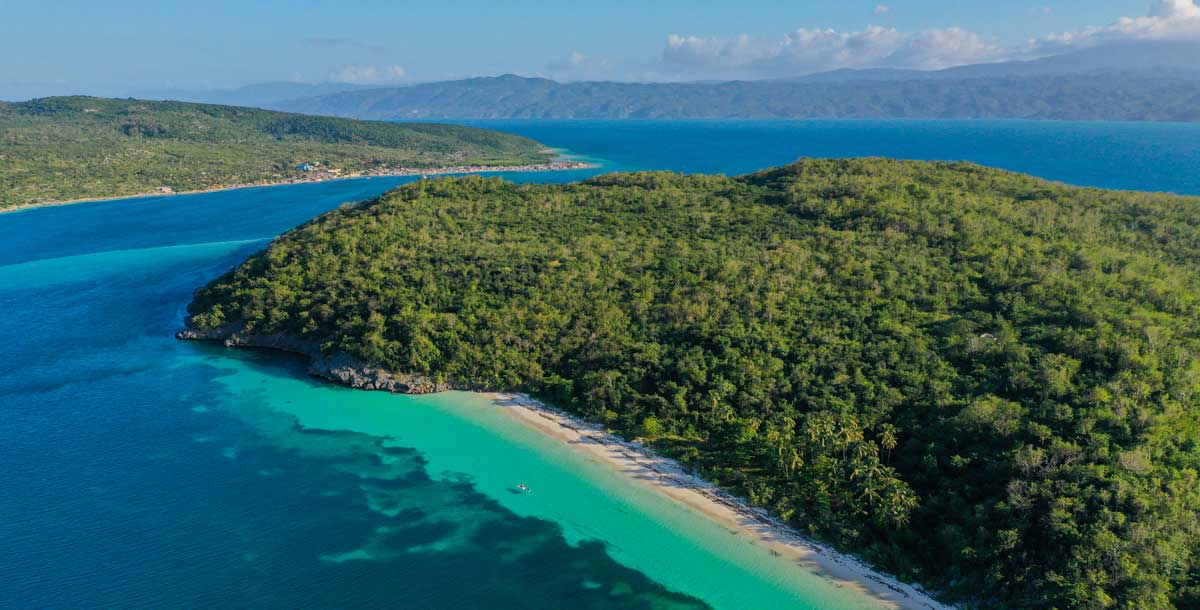
Photo: Anton Lau
1. Haiti is (part of) an island
If you plan to visit the Republic of Haiti, keep in mind that it’s, in fact, the western part of an island that it shares with another republic, the Dominican Republic. The name of this island is Hispaniola. The Dominican Republic lies to the east, and its capital is Santo Domingo. Haiti lies to the west, and its capital is Port-au-Prince. The two nations share, in addition to the island, an eventful history, with each possessing a unique cultural identity despite a few similarities they have in common.
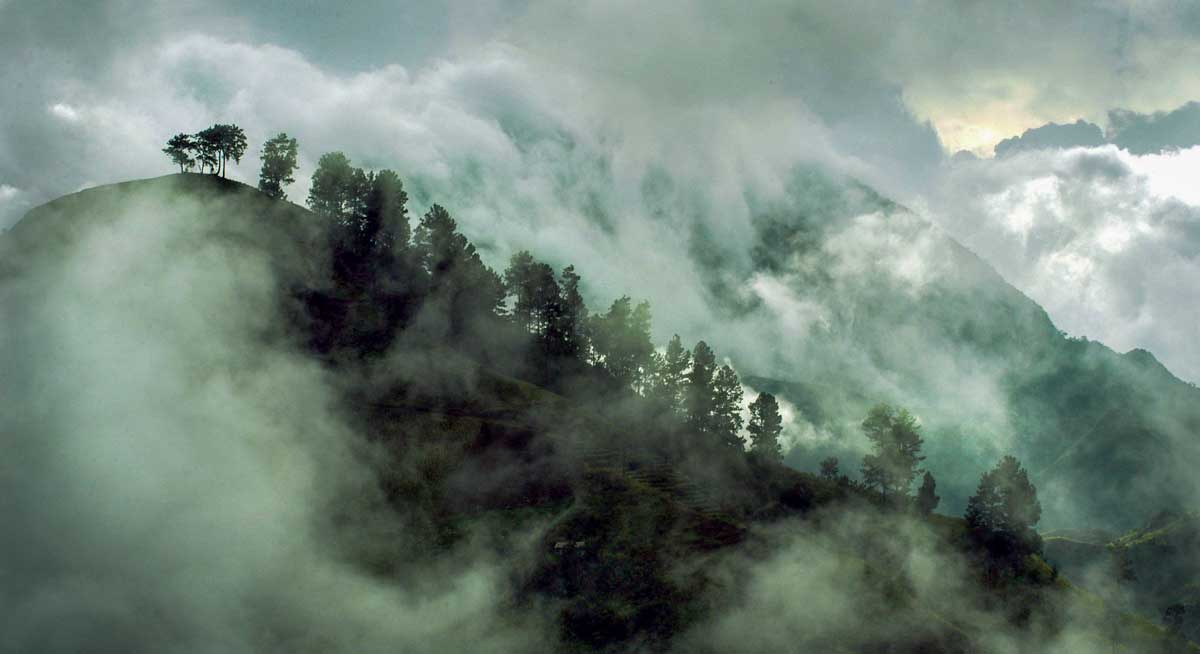
Photo: Alamy
2. Haiti is mountainous
No matter where you may find yourself in Haiti, you’ll either be on a mountain range or have one in view. The country is made up of a series of breathtaking mountain landscapes. Actually, the very name Haiti means “mountainous land” in the Taíno language spoken by the island’s indigenous inhabitants.
So if you like hiking in the mountains, Haiti is the perfect tourist destination for you. Two main mountain ranges dominate the country’s topography, covering it from north to south. So, grab your hiking shoes and your camera, and come enjoy our mountain landscapes and the fresh air of the countryside!
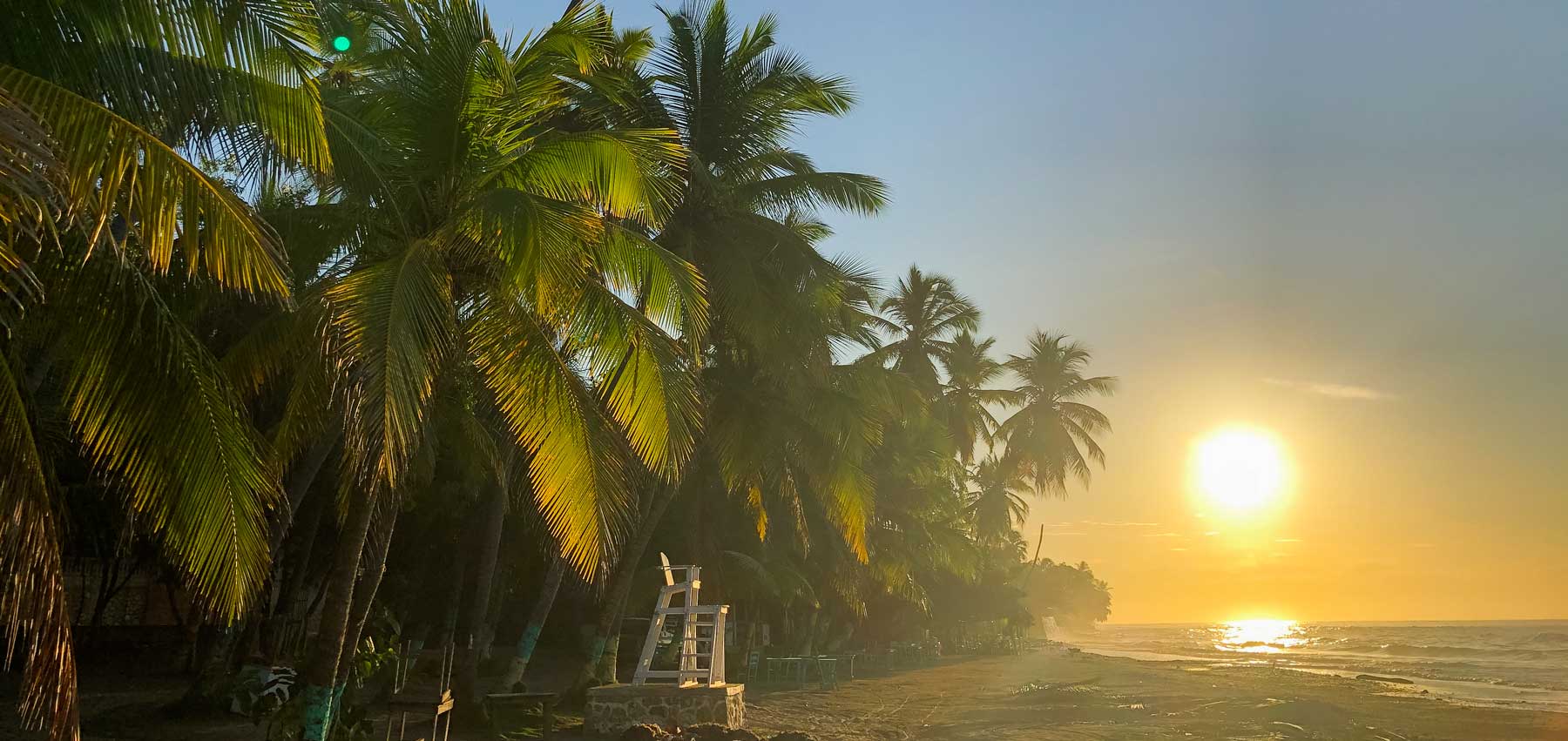
Photo: Anton Lau
3. It’s summer all year round
In Haiti, there’s sunshine and even more sunshine! In our country, the weather is nice all year round. The tropical climate typically means just one hot season and another season that’s a little milder. So, no matter the time of year, Haiti’s white sandy beaches are waiting to welcome you. Don’t forget to bring your bathing suit to take a dip in the ocean, because the summer is truly never over here – and that’s just a fact!
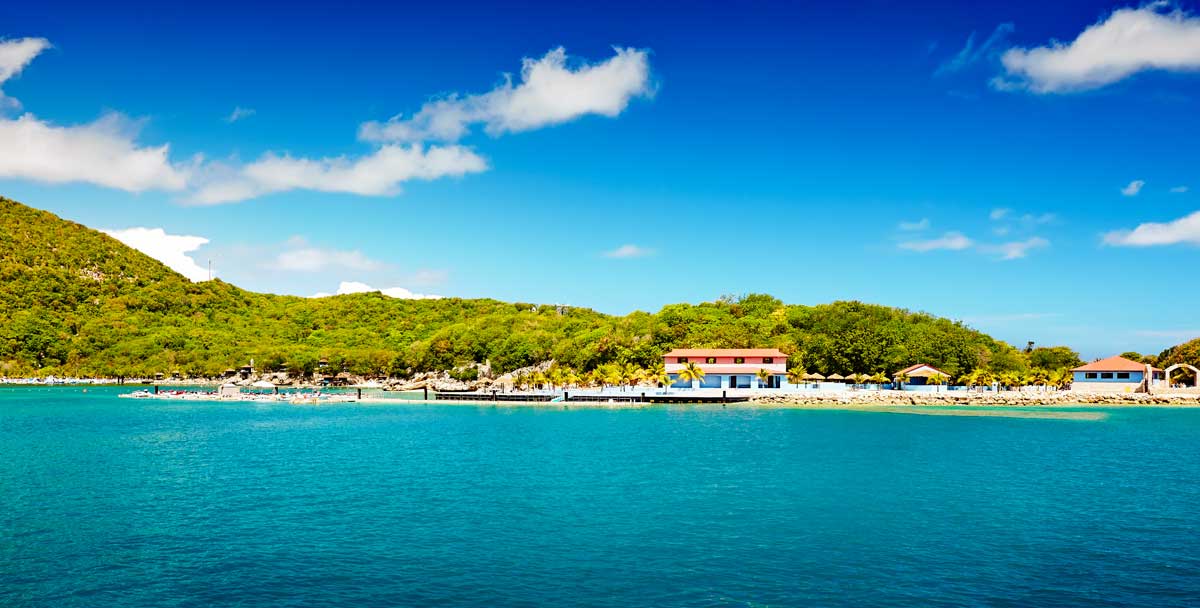
Photo: Shutterstock
4. We have breathtaking coastlines
The Caribbean is well-known for its lovely beaches, and our beaches are among the most beautiful in the region. You can visit Lover Island in Ile à Vache, Labadee in Cap-Haïtien, the Arcadins coast, the Anse Blanche beach close to Pestel, or Boukanye in Petit-Goâve. No matter where you go in Haiti, there’s a lovely white sand beach to discover!

Photo: CavesOfHaiti.org
5. Haiti has the deepest cave in the Caribbean
Are you a fan of caving and exploring deep underground grottos? If so, dive into one of the Caribbean’s most spectacular cave adventures. With a massive cave system of more than four kilometers (two-and-a-half miles), the Grotte Marie Jeanne is the deepest cave in the Caribbean! Located in the south of Haiti by the city of Port-à-Piment, this impressive cave and its five levels of natural galleries and stalactites will, without a doubt, leave you speechless.
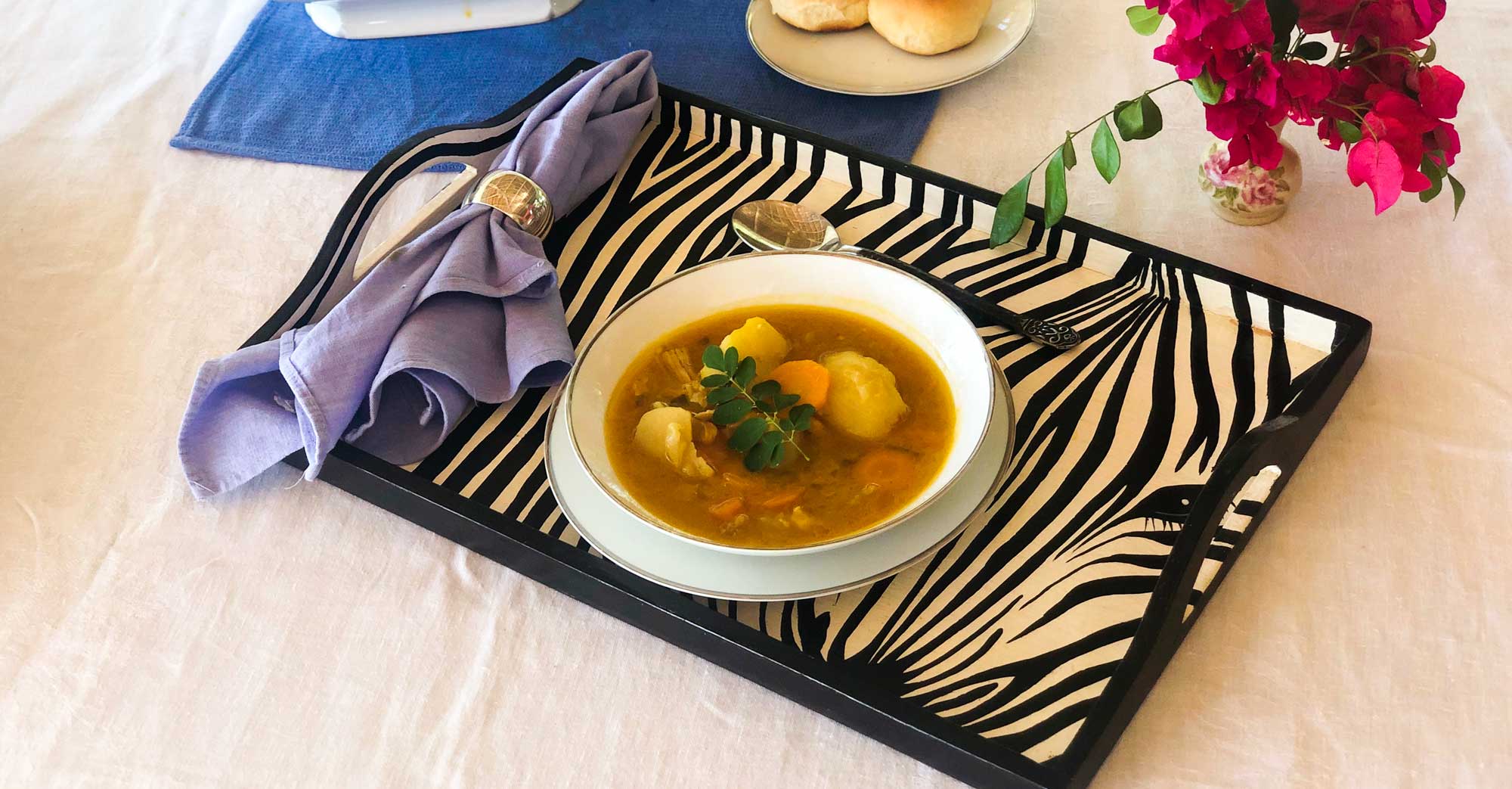
Photo: Anton Lau
6. World-renowned food
When you discover Haitian cuisine, we are sure you’ll want to tell the whole world! In fact, we have a dish that UNESCO recognizes as part of the “Intangible Cultural Heritage of Humanity.” The dish that earned this high honor is a soup like no other, Soup Joumou. This soup is a real treat for the tastebuds, prepared with giraumont (turban squash), other vegetables, tubers, and meat. While traditionally eaten on New Year’s Day among families, as Americans do with Thanksgiving turkey, feel free to delight in this famous soup any time of the year! It’ll be our pleasure.
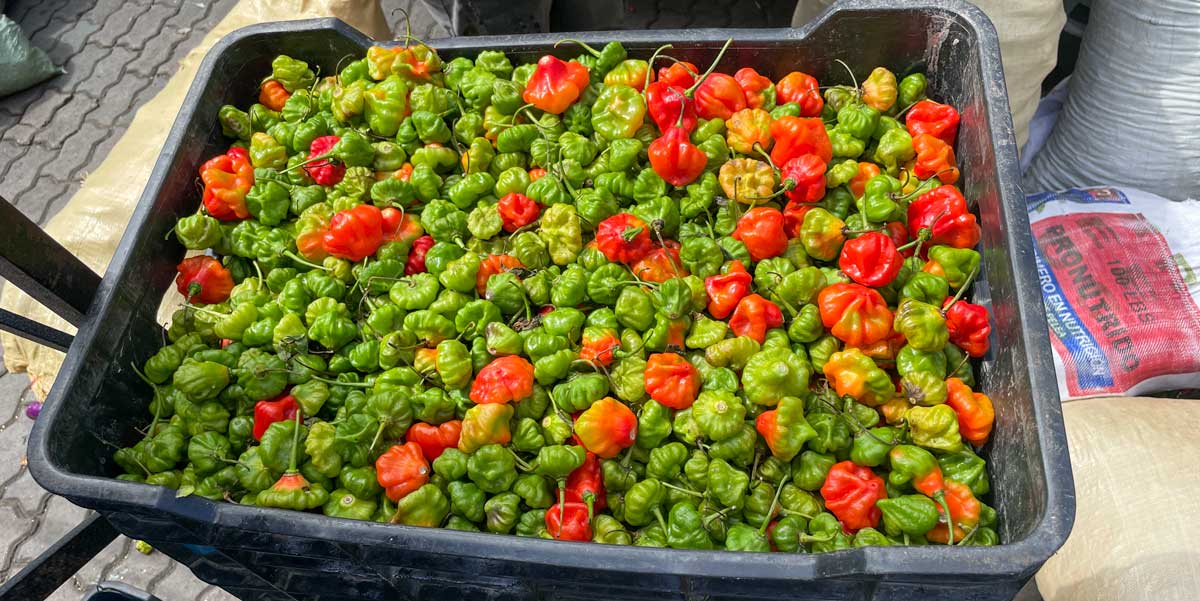
Photo: Anton Lau
7. Haitians enjoy spicy food
While we’re on the topic of Haitian cuisine, it might be a good time to let you know that Haitians eat particularly spicy food, as is the case for many of our Caribbean neighbors. Our cuisine is spiced with goat pepper, vinegar, and all the spices grown locally on the island. Before tasting a Haitian dish, you may want to prepare yourself, as the exceptionally spicy taste of our cuisine might take you by surprise!
Explore the flavors of Haitian cuisine through this culinary map!
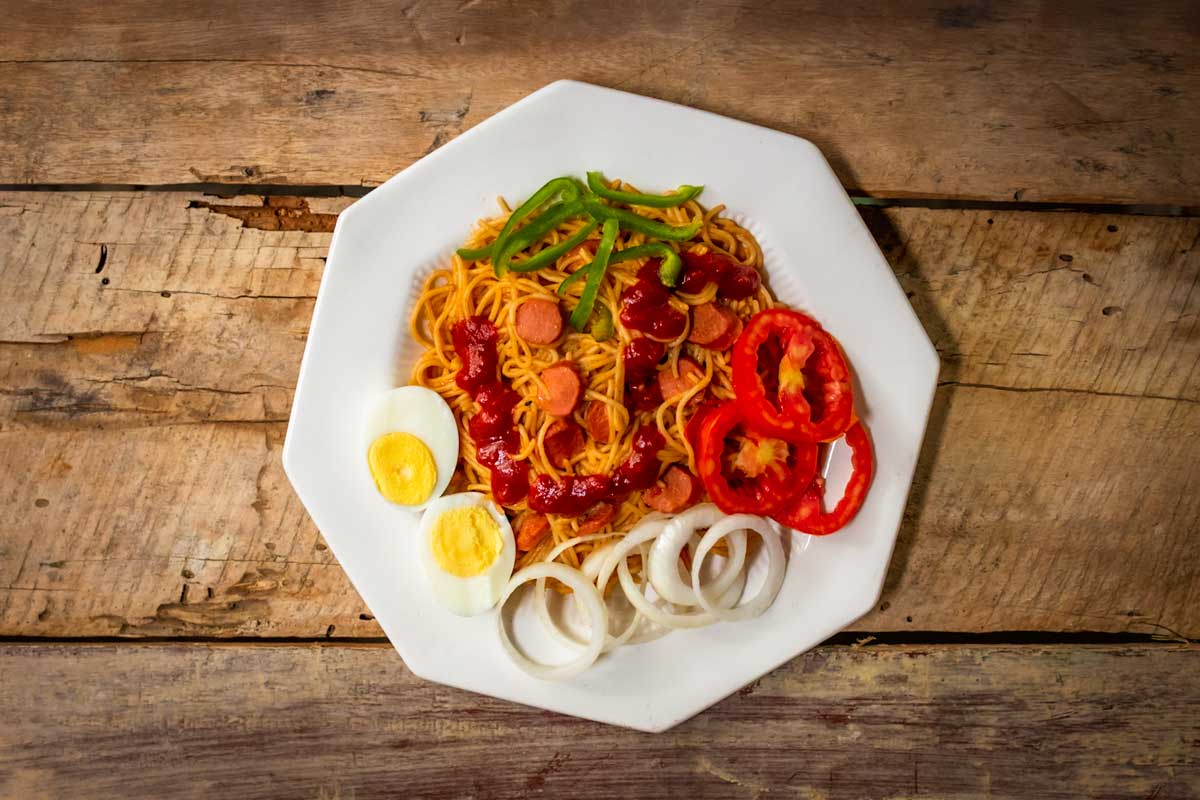
Photo: Jean Oscar Augustin
8. Haitians eat spaghetti for breakfast
Let’s continue with the theme of Haitian cuisine. Don’t be too thrown off by our eating habits, which may differ from yours. For example, Haitians truly subscribe to the old adage that breakfast is the most important meal of the day, often eating rather heavy food as soon as they wake up. So, don’t be surprised if a Haitian offers you a big plate of spaghetti for breakfast!
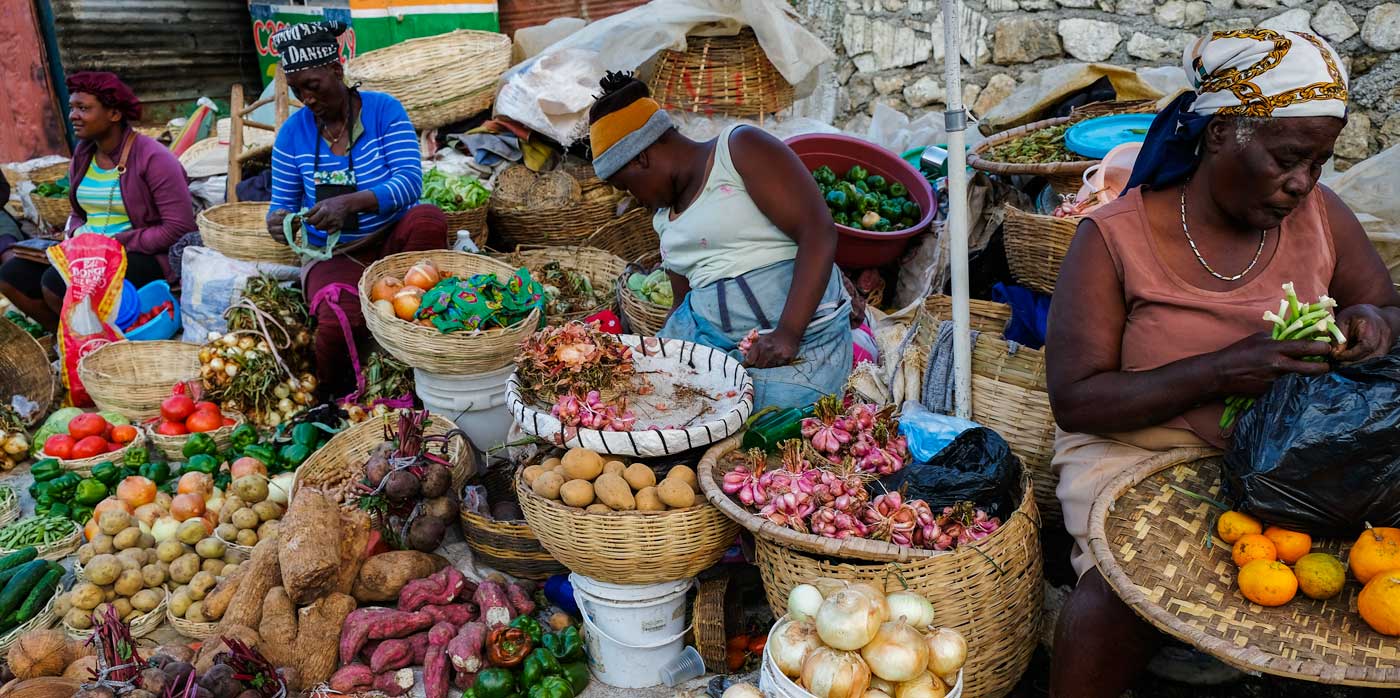
Photo: Franck Fontain
9. Degi
We have a word for what you get for free when you shop at our local markets. So, don’t forget to claim your degi the next time you visit a Haitian market. The vendor will willingly add this to your groceries if you have made a nice purchase or to encourage you to return!
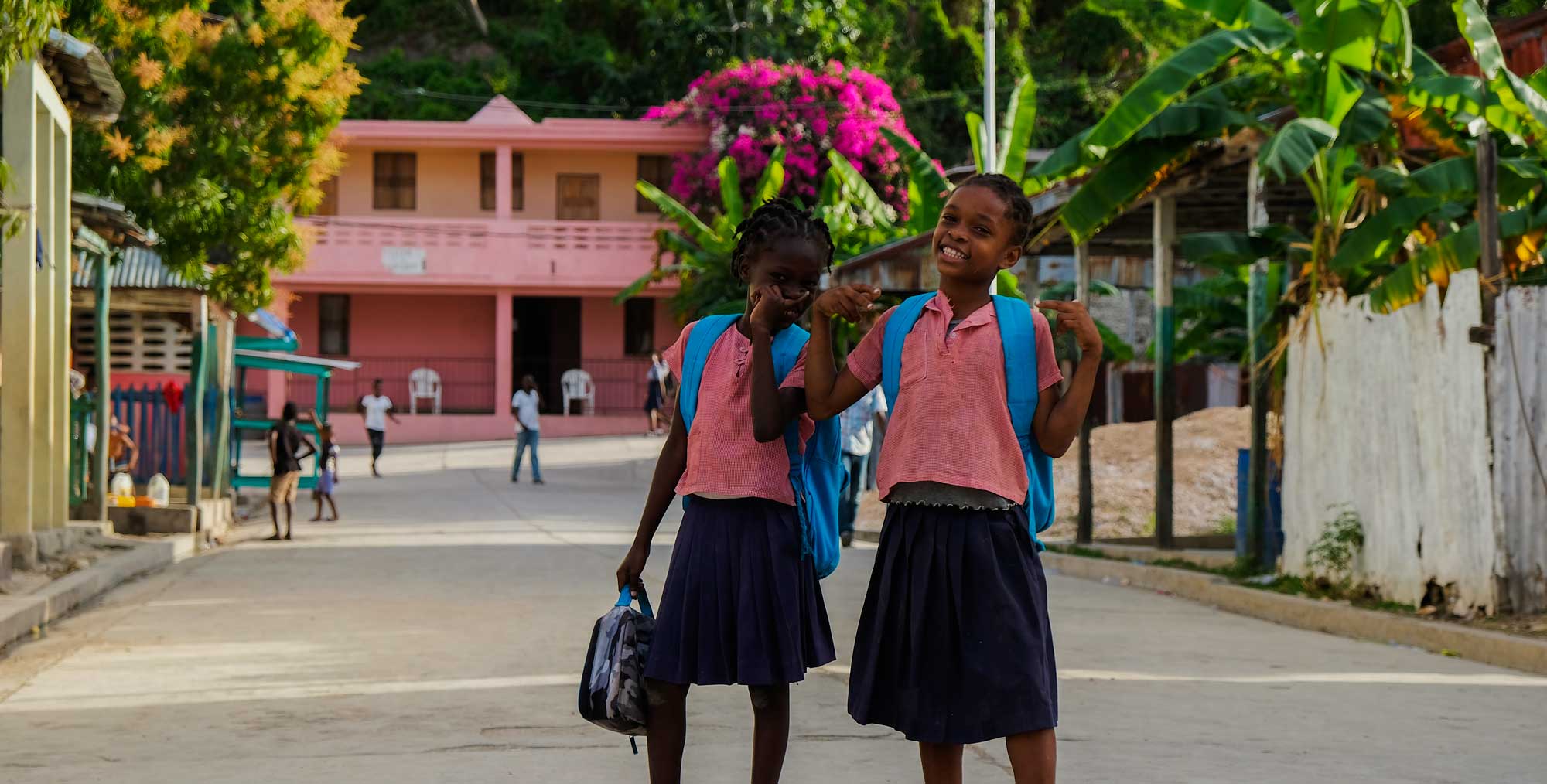
Photo: Franck Fontain
10. Greetings
You may be surprised by how many different greetings you hear when in Haiti. Thanks to the richness of Haitian Creole, you will hear much more than simply bonjou. Keep an ear out for greetings like sak pase (how are you?) or onè respè (cheers!).
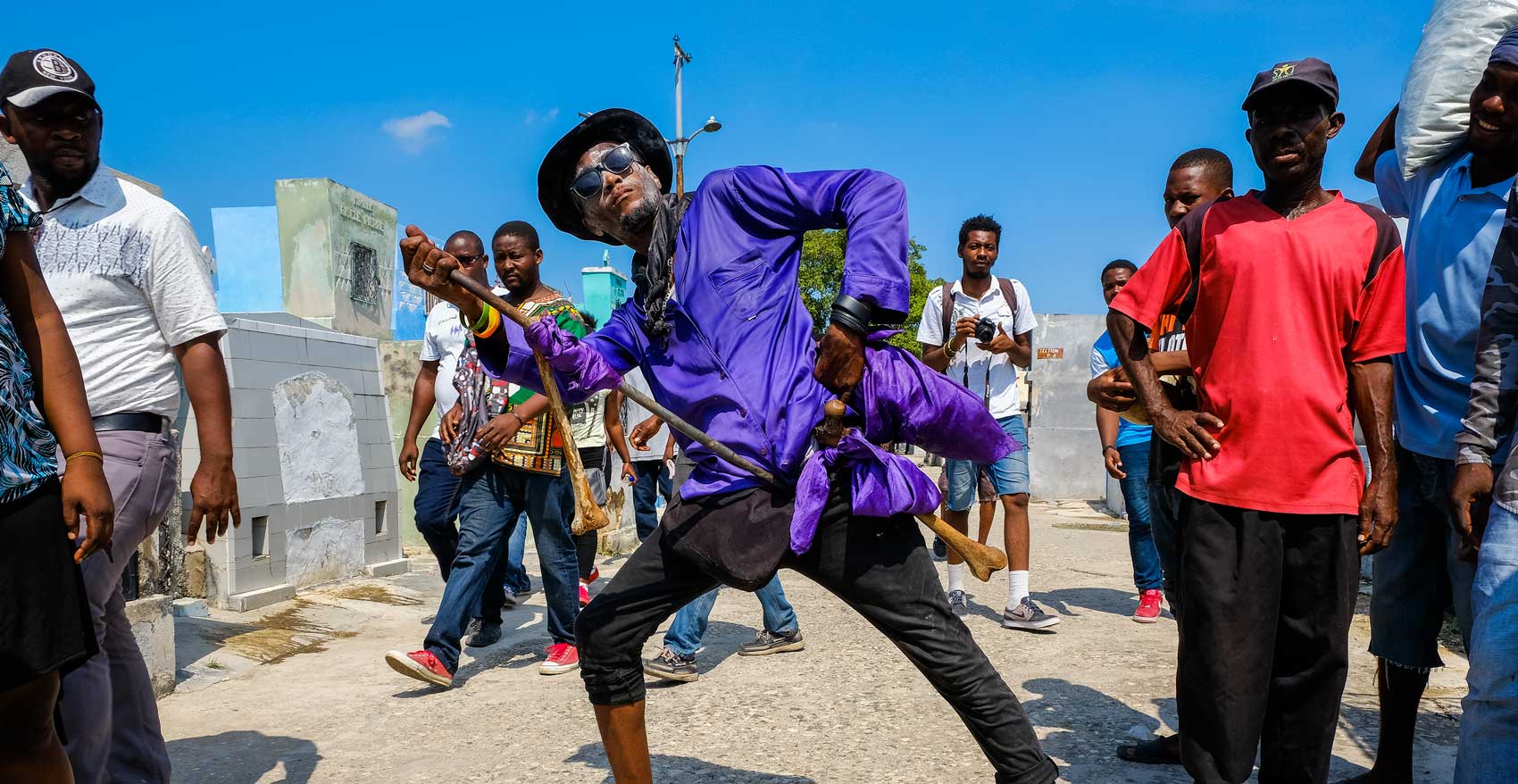
Photo: Franck Fontain
11. Haitians don’t celebrate Halloween
If you’re a big lover of Halloween costumes and children trick or treating, you can forget about it in Haiti. Many Haitians have not even heard of this holiday, let alone celebrate it.
Instead, Haitians celebrate Fèt Gede, a cultural tradition much like All Saints Day and the Day of the Dead practiced in Mexico and other Latin American countries. Ceremonies are held throughout the month of November to appease the dearly departed, cemeteries are cleaned, and graves are painted to welcome the loa (spirits) of those who return to the earthly realm during this period.
Read more about this unique cultural tradition and see photos from a Fèt Gede celebration in Gonaïves!
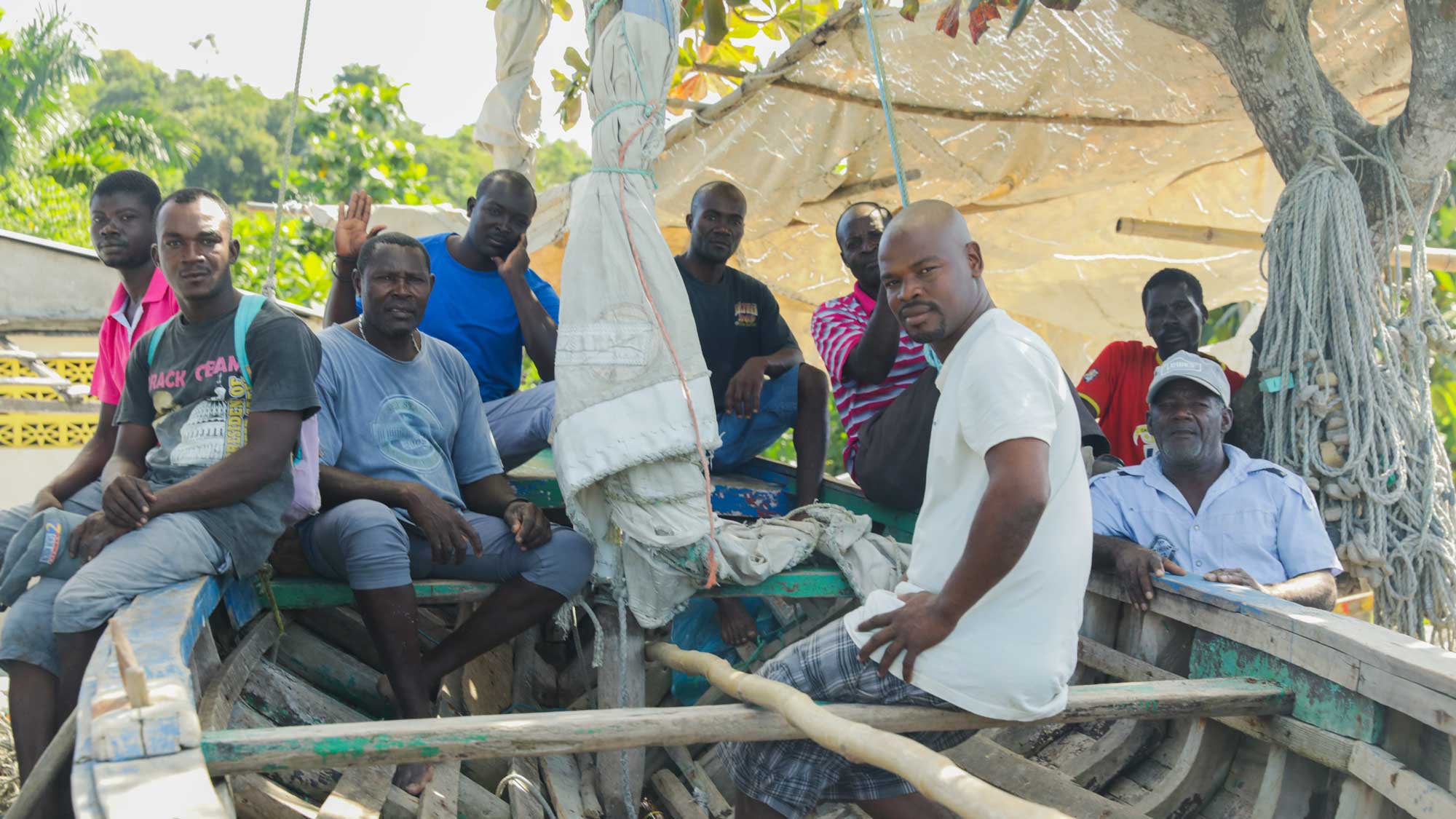
Photo: Mikkel Ulriksen
12. Haitian Creole is the most spoken creole language in the world
When we talk about a “creole” language, we’re referring to a language that developed out of the meeting of Latin, African, and Amerindian languages during colonization and its aftermath. These languages are now spoken in many communities all over the world.
Haitian Creole, however, has the largest number of speakers in the world, and it’s also the most widely used language in Haiti. There’s even a Haitian proverb that testifies to the simplicity of the language and the fact that Haitian Creole is understood as easily as it is spoken: kreyol pale, kreyol konprann.

Photo: Anton Lau
13. In our country, peanut butter is a little bit… extra
We’re guessing you’ve probably already tasted peanut butter. Here in Haiti, this creamy treat is known as manba, and it’s often used as a spread on bread or cassave, which is a flatbread made from cassava root. But what might surprise you — although maybe less so after reading this article — is that our peanut butter is particularly spicy since it’s mixed with hot peppers, ginger, and other local spices. This gives it a potent flavor that is unique to Haiti!
14. The famous novelist Alexandre Dumas is of Haitian origin
Haiti is known for its many poets and novelists who have won international awards, including authors such as Jacques Roumain, Frankétienne, Jean-Stephen Alexis, Marie Chauvet, Dany Laferrière, Edwidge Danticat, and Yanick Lahens. But among the most famous novelists in the world are Alexandre Dumas Jr. and Sr., who are of Haitian origin. The author of the classic novel The Three Musketeers (Dumas Sr.) is, in fact, the son of a mulatto general born in Jérémie when Haiti was still a colony of France.
15. How’s this for a fun fact? Venezuela’s flag was created in Haiti
You might know the flag of Venezuela with its stripes of yellow, blue, and red. But did you know the flag was first flown not in Venezuela but in the Haitian coastal city of Jacmel? More precisely, on March 12th, 1806. The flag was designed in Jacmel by General Francisco de Miranda, a Venezuelan who began the struggle for the liberation of Venezuela, Ecuador, and Colombia. This struggle was taken up by Simon Bolivar with the help of then-Haitian president Alexandre Pétion.
Written by Costaguinov Baptiste.
Published October 2022.
Explore Haiti’s Art and Culture

Paradise for your inbox
Your monthly ticket to Haiti awaits! Get first-hand travel tips, the latest news, and inspiring stories delivered straight to your inbox—no spam, just paradise.

